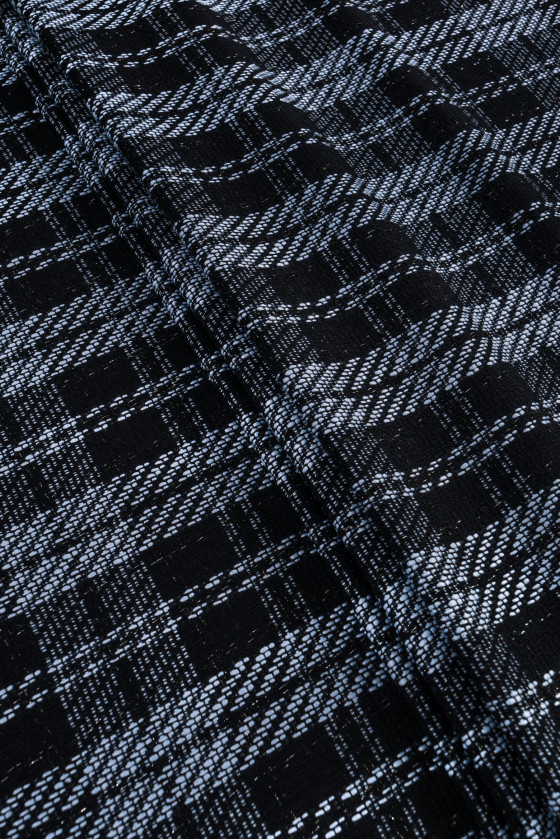- today
- perm_identity Izpol
- label Fabric
- favorite 0 Likes
- remove_red_eye 12460 Visits

In fashion, very often simple patents are the best. A perfect example is it, black and white, simple and invariably elegant – pepitka. This distinctive and brilliant in its simplicity black and white pattern has been with us for decades.
For some, pepitka may be associated archaic and unfashionable, but is this really the case? Or maybe we are just experiencing a renaissance of classics, which is represented by the pepitka fabric? As it turns out, pepita is still not bored, because with each subsequent season it appears in trends in a slightly different version.
What is pepitka – a pattern that connects fashion generations
Pepitka is one of the most recognizable designs in fashion. You can find examples of fabrics using pepitka in our category Patterned fabrics. It is a characteristic black and white pattern, sometimes resembling a chessboard, other times fanciful and crooked, with a more or less dense grid. You can come across various variations of it, but the pepitka pattern always means simplicity and timeless chic.
Fabric with a pepitka pattern is currently used by most designers. And because it is visually neutral and unobtrusive, it fits many different stylizations. It will work as an addition, background or styling base. Both for official occasions and more casual situations.
Pepitka fabric – what was it used for in the past?
Where did the idea for such a slightly funny name come from? This is what we call the pepitka pattern in Poland, and the source of this word comes from the Spanish "pepita", i.e. the seed of the fruit. In other countries, pepitka is called differently. In England, the term Houndstooth, meaning "dog tooth", has become commonplace. The French, in turn, call it Pied-de-Poule, which means "chicken foot".
The oldest mention of the use of pepitka comes from the third century – it was discovered on the then Scandinavian fabrics. Over the years, the pepitka pattern has evolved, and today's shape originates from Scotland. She was very popular on seventeenth-century tweed plaids. The classic pepitka fabric gained popularity in the 30s of the twentieth century, thanks to the Prince of Wales – Edward VII, who popularized this pattern. The pepitka fabric was used by great designers – Christian Dior, Michael Kors, Alexander McQueen and Geoffrey Beene. The latter already in the 60s. He discovered how pepitka works well with lavender, greens and caramel. And also, of course, the famous Coco Chanel, so loving tweed.
Styling ideas – pepitka material
Fashion trends are changing, but pepitka is such a universal and proven pattern for centuries that it appears in every annual collection. Its return is most often observed before autumn, because it is often an element of outfits for colder days. And how is it worn today? The most classic styling is pepitka fabric combined with other clothes in black, gray, white or – if we want to get a bit of spiciness – red. Due to the black and white base, pepitka is a fabric that harmonizes with various other stylizations.
We'll give you some ideas:
- Pepitka fabric works well as a coat material in an oversized cut, as well as an addition, in a tiny version of the pattern.
- Often, a pipette is used as a pattern on only one element of the wardrobe – e.g. only on a jacket. However, there are no contraindications to go a bit crazy and transfer the pepitka to other elements in the styling, e.g. by creating a suit or suit.
- In some stylizations, pepitka is a good pattern for an accessory or accessory, even as small as a bow tie or tie. Despite the dimensions, the pipette can stand out and make you look unique compared to other people, seemingly identically dressed.
Very important for the overall reception of styling is the selection of the size of the pattern. The larger it is, the stronger the accent – the clothing itself draws attention to the pepitka and emphasizes the decisive character. The smaller the pattern, in turn, the discretion the styling becomes. It requires a better look, attention and discovers its details only with time. As you can see, pepitka material can be worn in many ways, and you can easily find it in our warehouse.

